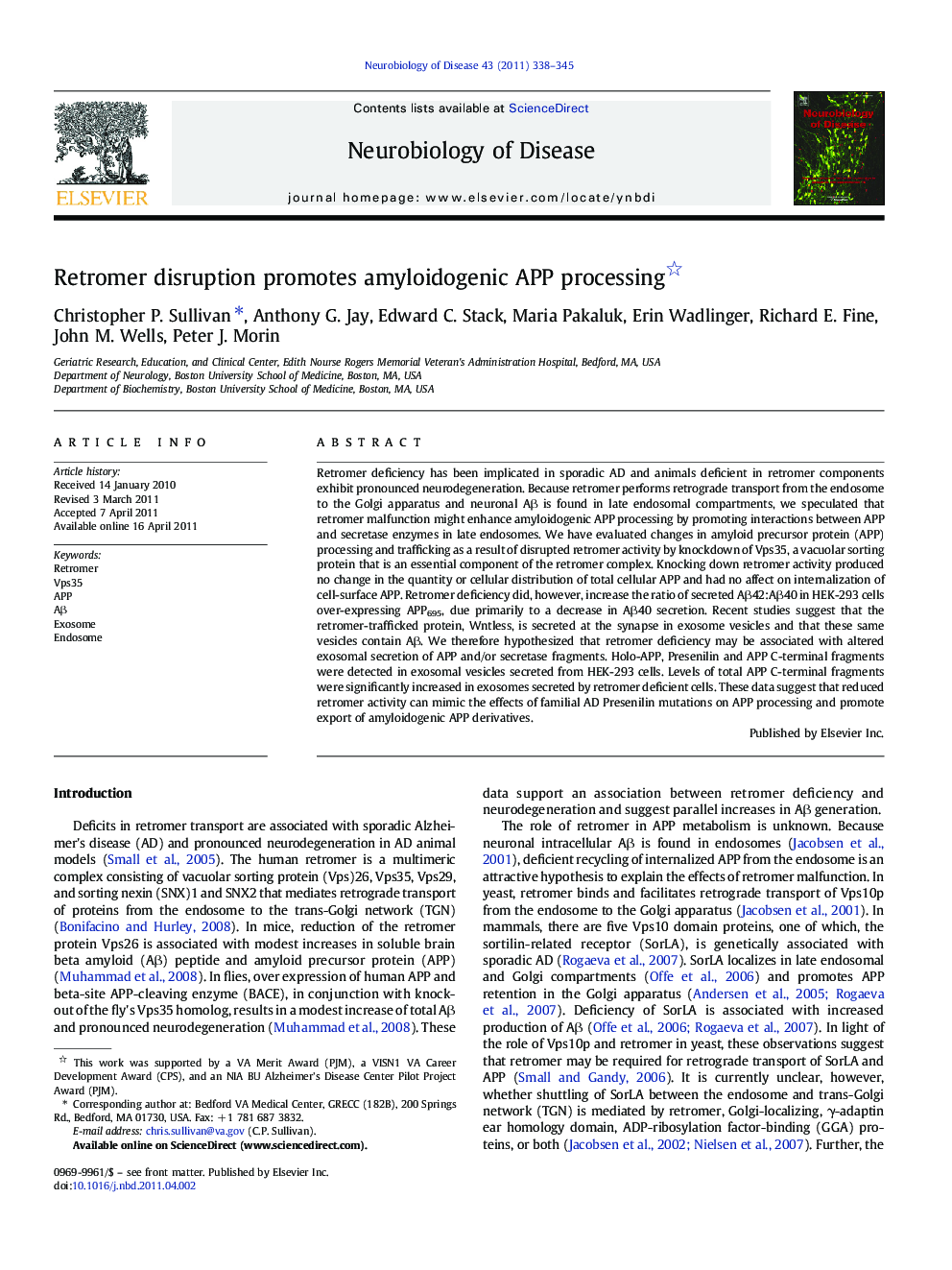| Article ID | Journal | Published Year | Pages | File Type |
|---|---|---|---|---|
| 3069657 | Neurobiology of Disease | 2011 | 8 Pages |
Retromer deficiency has been implicated in sporadic AD and animals deficient in retromer components exhibit pronounced neurodegeneration. Because retromer performs retrograde transport from the endosome to the Golgi apparatus and neuronal Aβ is found in late endosomal compartments, we speculated that retromer malfunction might enhance amyloidogenic APP processing by promoting interactions between APP and secretase enzymes in late endosomes. We have evaluated changes in amyloid precursor protein (APP) processing and trafficking as a result of disrupted retromer activity by knockdown of Vps35, a vacuolar sorting protein that is an essential component of the retromer complex. Knocking down retromer activity produced no change in the quantity or cellular distribution of total cellular APP and had no affect on internalization of cell-surface APP. Retromer deficiency did, however, increase the ratio of secreted Aβ42:Aβ40 in HEK-293 cells over-expressing APP695, due primarily to a decrease in Aβ40 secretion. Recent studies suggest that the retromer-trafficked protein, Wntless, is secreted at the synapse in exosome vesicles and that these same vesicles contain Aβ. We therefore hypothesized that retromer deficiency may be associated with altered exosomal secretion of APP and/or secretase fragments. Holo-APP, Presenilin and APP C-terminal fragments were detected in exosomal vesicles secreted from HEK-293 cells. Levels of total APP C-terminal fragments were significantly increased in exosomes secreted by retromer deficient cells. These data suggest that reduced retromer activity can mimic the effects of familial AD Presenilin mutations on APP processing and promote export of amyloidogenic APP derivatives.
Research highlights► Vps35 was knocked down in human cell cultures to disrupt retromer trafficking. ► No changes in APP levels or cellular localization were observed. ► Secretion of amyloid beta was reduced. ► Exosomal secretion of APP CTF was enhanced.
